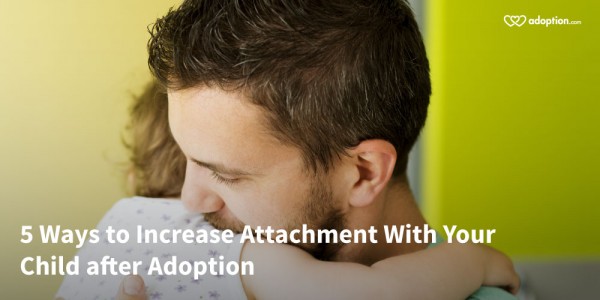I would like to think that over the past nine years and three adopted children, I have learned a little something about attachment and connection. While I have certainly come a long way in my attachment practices, it is still very much a work in progress. Since relationships grow and change, attachment and connection are not something that is done once and crossed off a list; instead, it is an ever-evolving dance between parent and child.
If I could communicate one thing to adoptive parents, it would be that we need to lose the idea that attaching is something the child does to us. I made plenty of mistakes following what I thought was the right way to parent and waiting for my son to attach to me. It took years of that approach not working to convince me that attaching wasn’t something that I could expect him to do, but something I had to do on his behalf. I needed to be the one to bend. If I were to be given the gift of getting a do-over for the first years of his adoption, here is what I would do.
1. Assume the child is doing the best he can. If I had done this one thing, our relationship would have been so different from the beginning. Even if it doesn’t look as though the child is trying, it is most likely because there are too many big emotions and feelings inside his head for him to function well. I was expecting my child to do something he wasn’t capable of and then becoming angry or irritated when he couldn’t. Instead of setting him up for success, I was setting him up for failure. Even if it feels wrong (and it felt wrong to me many, many times), assume your child is doing the best he can. By doing so, you will be on the same team instead of being opposed to one another.
2. Have very few expectations at the very beginning. Lose the idea of “start as you mean to go on”. Instead, have the same emotional expectations of your child as you would an infant, because in these early times, that is about where she is. Your relationship is new and this is where you need to begin . . . at square one. Do what you can for her with the security of knowing that you won’t be doing this forever. Does she need help getting dressed? Help her. Does she need help eating? Help her. Does she need you near her to sleep? Stay with her. Does she get easily overwhelmed? Keep her world small. Your job is to communicate love, care, and safety in whatever form that takes. Your child won’t need you to do these things forever.
3. Smile. This seems like such a simple thing that it is hardly worth mentioning, but talk to any parent of a child who is having difficulty adjusting to his new family, and they will say that smiling at the child is the first thing to go. Yet, think about what it would be like to live with someone who never smiled at you. It is a small thing, but incredibly important. Even better, smiling not only helps your child feel better, but helps you feel better as well.
4. Use positive touch as much as possible. Some children will crave your touch and it will feel as though you have your own personal remora attached to you; others will act as though it is painful to have you touch them. Even avoidant children need positive touch—you just have to be more creative. Ways you can build positive touch into your day include rocking in a rocking chair; reading stories side by side; touching an arm, cheek, or head as you pass by; stroking a cheek or forehead at bedtime; quick kisses; hand-stacking games; hair combing; games of Twister; and helping them to swim.
5. Be careful with what you think. I know firsthand how easy it is to brood and think extremely negative thoughts about my child. The trouble is, once this line of thinking is begun it is very difficult to get out of the rut and it colors not only how you view your child but how you treat that child as well. I had to make a conscious effort to allow myself only positive thoughts about my child. If I found myself dwelling on the negative, I would force myself to come up with something positive about him instead. If you are in a negative cycle with your child, this can be a difficult assignment, yet it must be done. Stop for a moment and think about a child with whom you feel connected. Probably you have a lot of positive thoughts and feelings about that child and the child’s negative traits are a little glossed over. We treat that child accordingly. This is where we need to move our mental thinking about a child with whom we are having difficulty. While our actions can influence our thinking, our thinking can also influence our actions.
As your new child learns to trust you, attachment will grow of its own accord. Be the kind of parent you would want if you were scared and grieving. Aim for kindness, use compassion, and build connections before anything else.

